As businesses grow and data proliferates, data stakeholders often find themselves navigating an intricate web of challenges that hinder the seamless utilization of one of their most valuable assets—data. Locating an asset, understanding whether its data truly corresponds to what they are looking for, and trying to assess the reliability of the data are common pain points teams run into when trying to adopt a data self-service mindset.
This blog post delves into two pivotal facets of the Sifflet Data Catalog product: metadata consolidation and enrichment. It then explores how a robust data cataloging strategy can be instrumental to enable data stakeholders to find, understand, and confidently use their data.
A Consolidated Metadata Hub
Through integrations spanning the entire data lifecycle, Sifflet gathers metadata for all your assets and consolidates them in a centralized Data Catalog, making it easy for data stakeholders to discover, understand, and govern data.
You can dig into data transformations by reading dbt models descriptions and seeing the input and output datasets, explore the structure of your Snowflake tables by examining their columns and previewing their data, or even assess the value of some of your Tableau dashboards thanks to usage computation—all of this in one centralized metadata hub.
Additionally, if a change happens to your data asset within your stack, Sifflet automatically picks it up, ensuring your Data Catalog always features the latest updates to your data assets. This eliminates the need for manual interventions, streamlines the maintenance process, and saves teams’ time, consequently allowing them to focus on deriving insights from data rather than managing catalog updates.
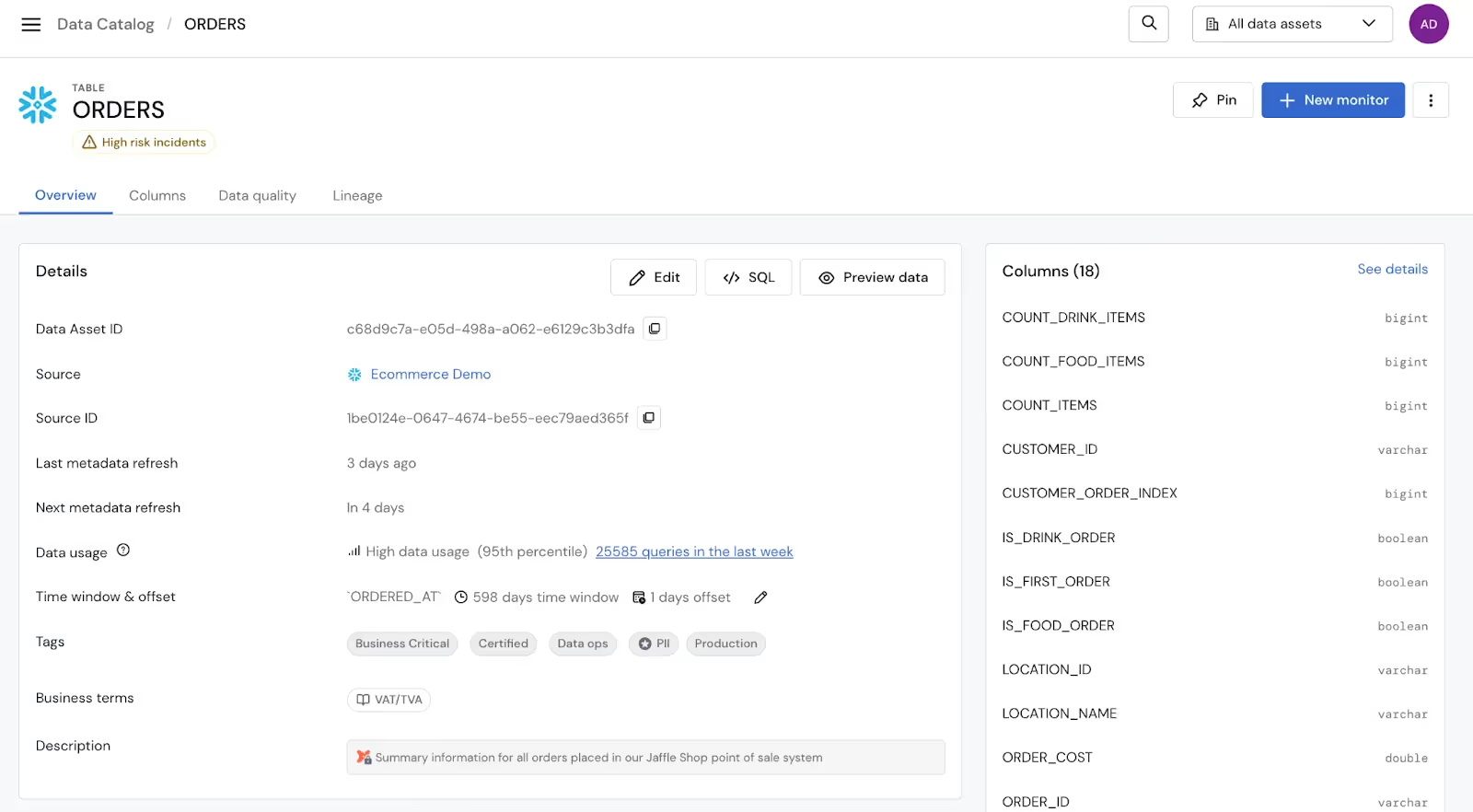
Sifflet also collects BigQuery labels and Snowflake tags and surfaces them inside of your Data Catalog, going one step further in making it the source of truth for your data discovery and governance needs.
Labels and tags are usually leveraged for classification purposes, for instance to identify the team or the environment a specific table or view belongs to but also to flag sensitive data. Tags and labels are a great way to organize your resources, manage your costs, and ensure sensitive data is handled safely.
Reflecting this classification inside of Sifflet enables a finer level of granularity in organizing and understanding your data, fostering precision and efficiency in data discovery and management. This not only results in a reduction in the time required to locate and comprehend assets but also increases the odds of stakeholders actually getting their hand on the asset they are looking for.

In an era where data technology providers often come equipped with their own built-in catalogs (Snowflake Snowsight, Databricks Unity Catalog, etc.), Sifflet Data Catalog acts as the Catalog of Catalogs, consolidating data assets from your entire data stack into a single repository to give all data stakeholders a comprehensive view of available data assets.
Augment Your Data Catalog With Context
Sifflet starts collecting assets to be cataloged and associated metadata with your first data source run. You can enrich cataloged data assets with additional context on Sifflet immediately thereafter. Whether it’s adding your own custom descriptions and tags to assets or taking advantage of Sifflet continuous machine learning-based recommendations, you can seamlessly and comprehensively document and classify your data assets inside of Sifflet. Quickly understanding what a data asset is about is crucial to ensure business teams feel comfortable and are efficient leveraging data for decision-making.

Properly defining key business terms in the Business Glossary and attaching them to your Data Catalog assets is another great way to ensure teams share a common understanding and interpretation of your data.

Thanks to Sifflet integrated monitoring capabilities, data stakeholders can also define data quality checks on their assets and subsequently get insights into the health of assets when navigating their Data Catalog. This additional data quality context drastically simplifies the process of determining the reliability of an asset for data consumers and is key to increasing their trust in data.
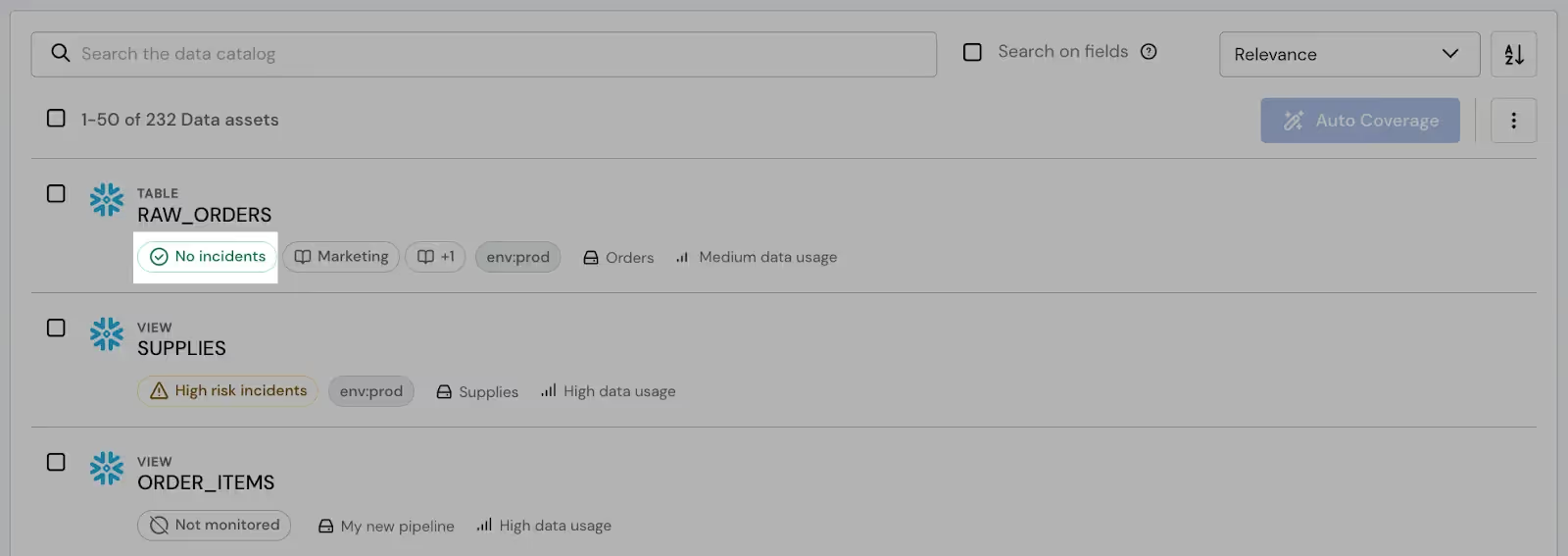
Harness the Power of Your Data Catalog
A consolidated Data Catalog, rich with comprehensive descriptions and classification, well-defined business terms, and data quality insights comes with countless benefits for your business.
First, it enables all data stakeholders to find the asset they need when they need it using a variety of search dimensions. Streamlining the discovery process is an effective means of preventing asset duplication and consequently of mitigating unnecessary costs.
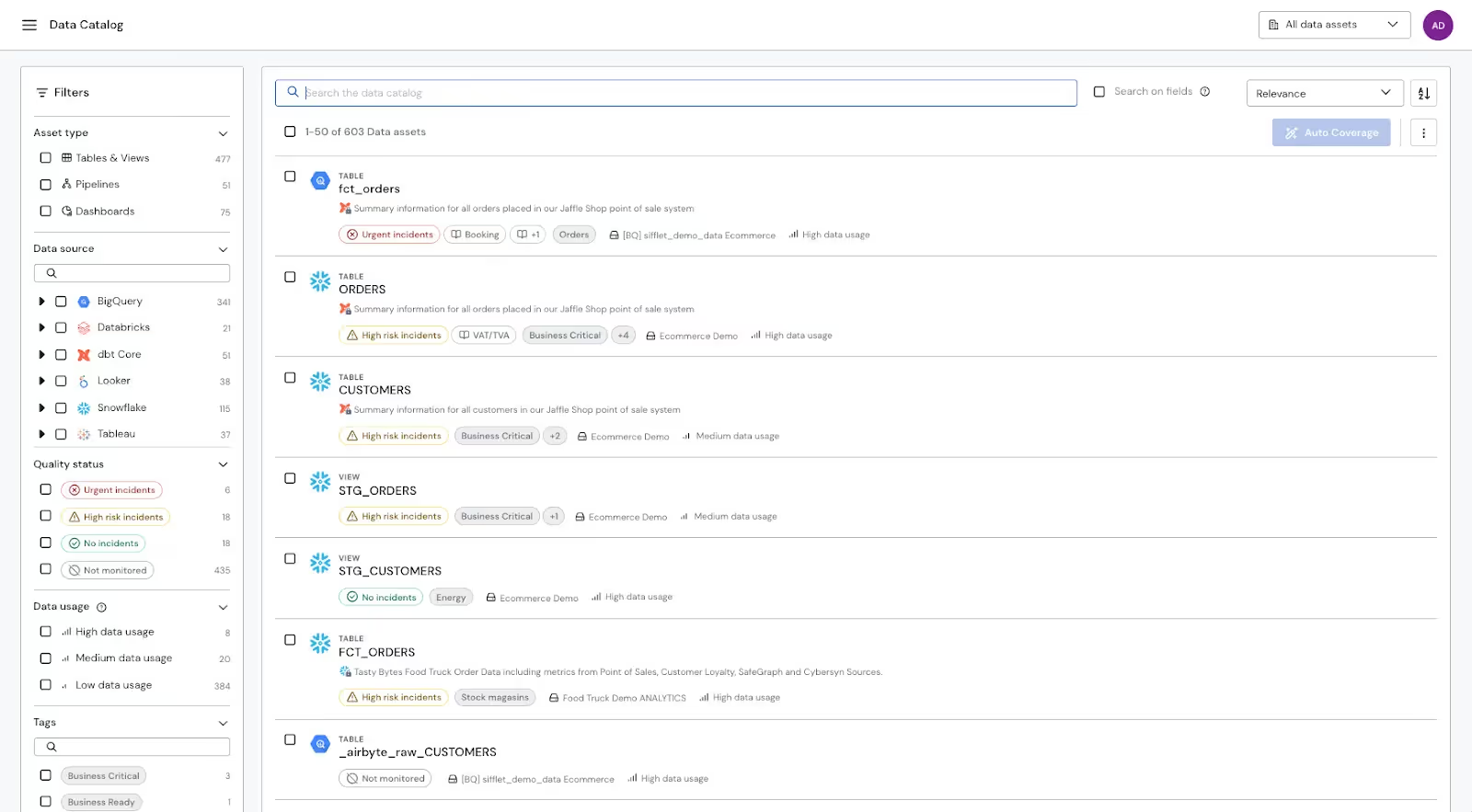
A fully fledged Data Catalog also ensures that data is accessible to both technical and non-technical users. Business users no longer need to take guesses at the data used in a dashboard and speculate about whether or not it does really correspond to the information they are looking for. Checking a dashboard asset page inside of Sifflet allows them to swiftly understand what the dashboard is about, how key metrics are being computed and where the data is coming from.

Finally, because a robust Data Catalog features data quality insights about assets, it is a great way to enhance data consumers’ trust in data and empower them to make data-based decisions. Business users can for instance immediately know whether or not there is an ongoing incident associated with the dashboard they are looking at, making it immediately clear whether the data they are going to use is reliable or not.
Start cataloging your data now
If you want to learn more about how Sifflet can help you catalog your data assets to help your teams find, understand, and trust data, you can check out our documentation or reach out for a demo.







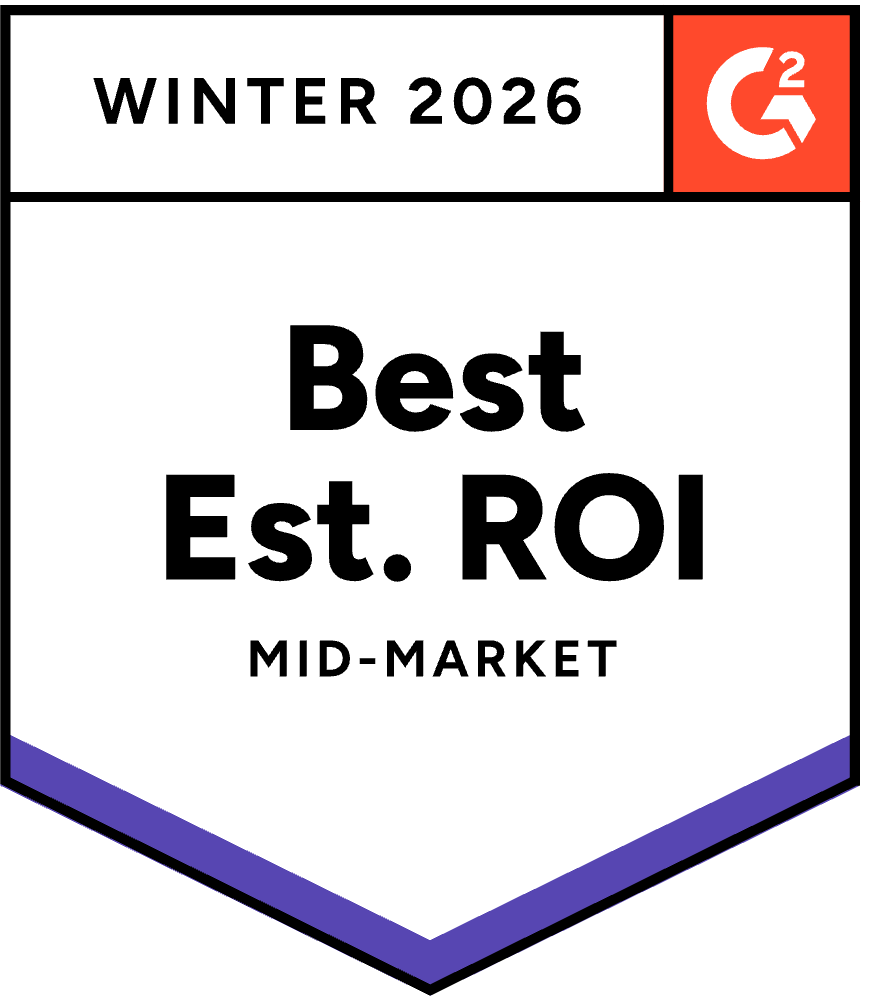


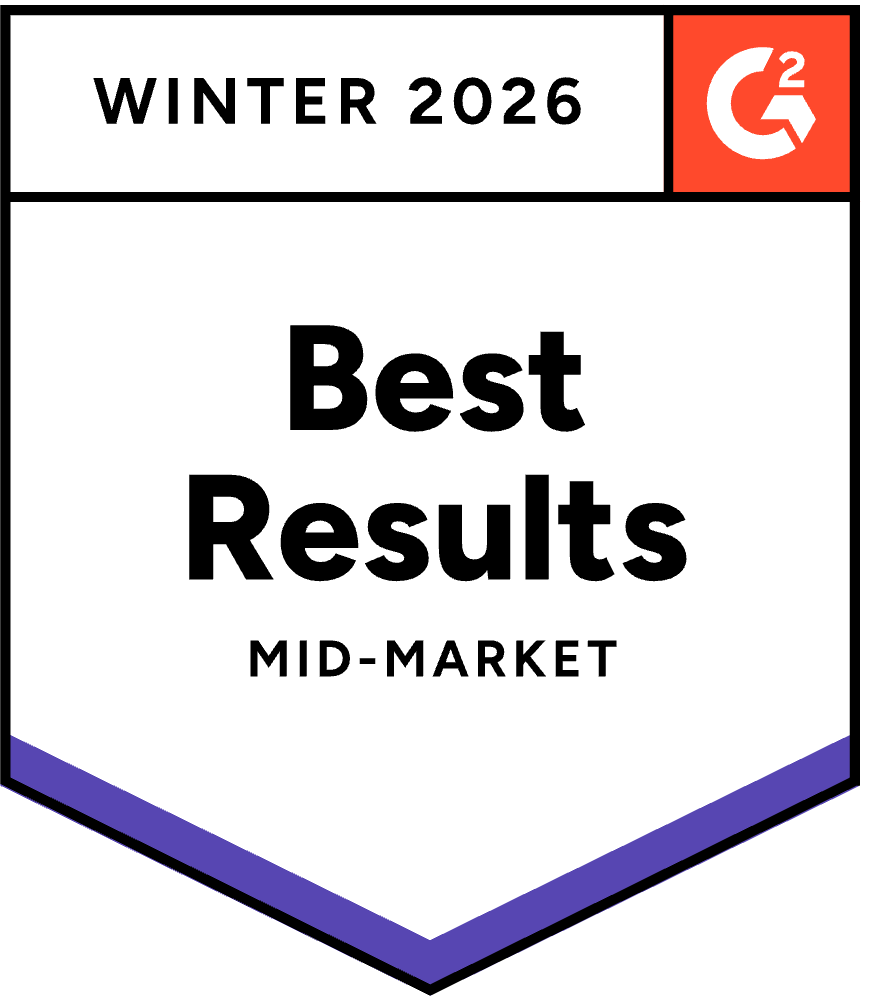






-p-500.png)
